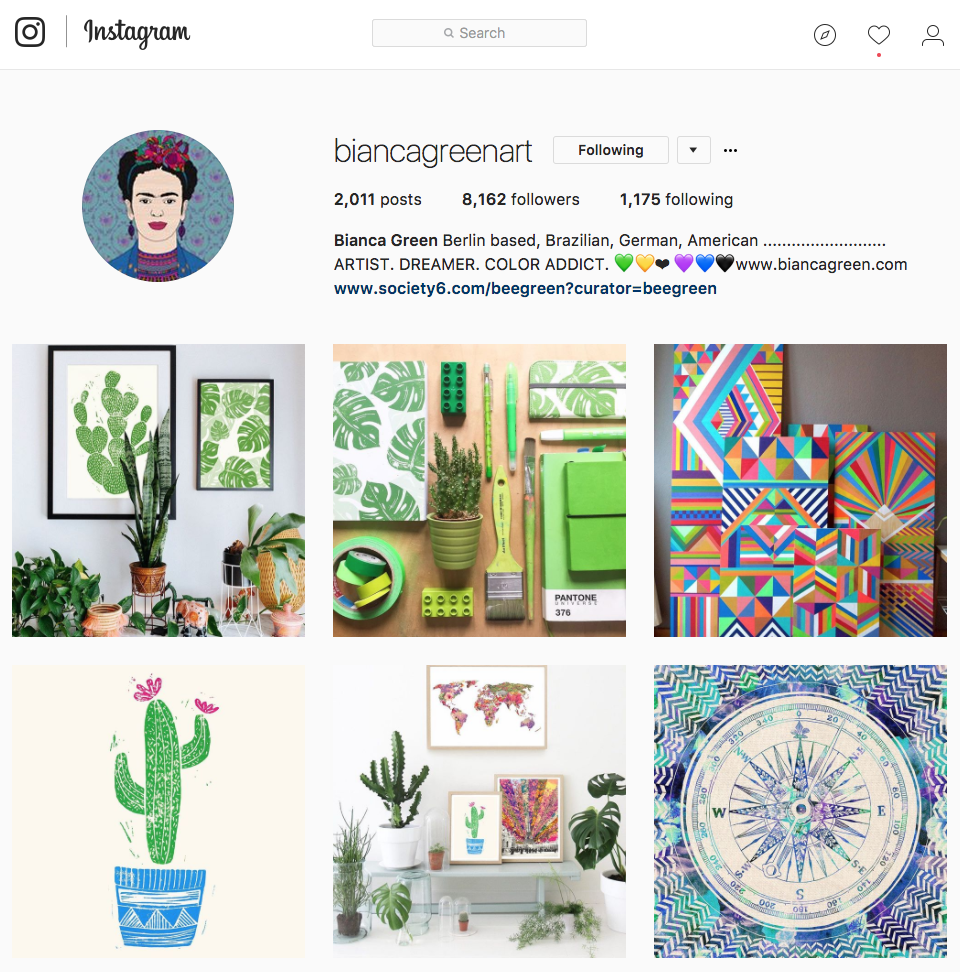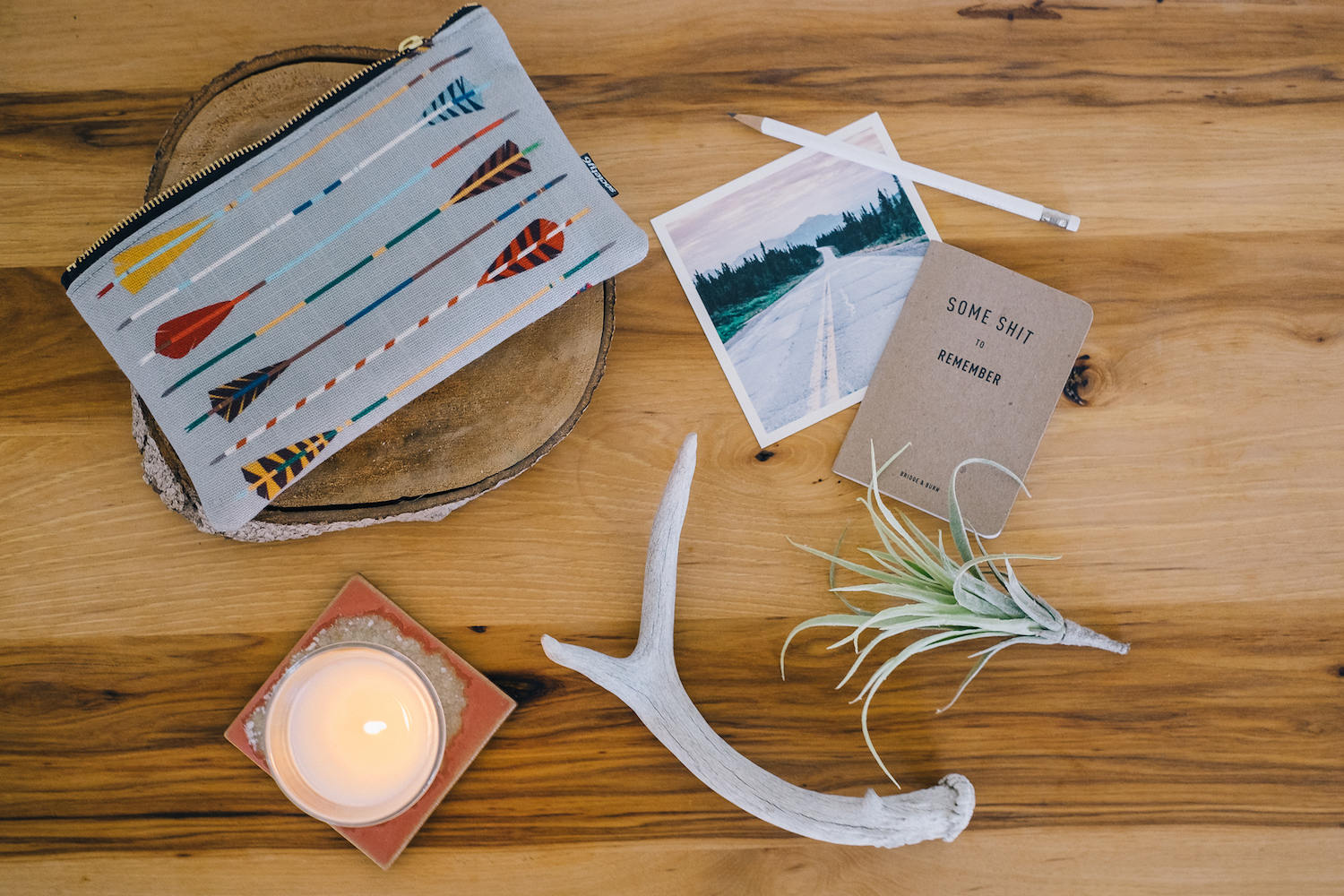Ready to boost sales by showing customers what your artwork looks like in their own hands and homes?
Hint: you don’t need to a fancy camera and yes, it’s easier than you think. Using these proven approaches, you can start driving traffic to your shop like a pro. In this article, we’ll share tips and tricks from Society6 artists who are killing the product photography game so that you can do exactly the same.
1 | Bright, natural light makes your products look good!
This was the top piece of advice from artists across the board. Show customers the details of your work in a naturally, well-lit environment. It’ll save you the hassle of editing your photos to correct weird lighting issues while effectively showing off what your products feel like in a real space. This is especially helpful if you’re shooting big home decor products–anything from wall art to comforters and beyond. Seeing your products in an environment can help your customers imagine what it will look like in their own homes. If your photos are too dark or blurry, it will degrade the quality of your products in your customer’s eyes, so shoot them in the best light possible.
The most important thing when shooting your own lifestyle photos is lighting! Natural light is best, preferably in the morning or late afternoon, so photograph by the window or even head outside. If you can’t get good natural light use as many lamps as you’ve got. Edit your photos in Photoshop – even poor lighting can be helped using curves. –Camille Chew, aka Lord of Masks
I want the lifestyle shots of my work to feel aspirational and portray the products accurately. I shoot in bright, natural light and prefer clean compositions that highlight the work. –Cat Coquillette
I like shooting my lifestyle images in my own world, my own home and in my very own design language that also represents and underlines my work. After growing into this and many experiences later, there are only a couple things I try to have in mind–good light (natural if possible), a good background and sharpness. If you put as much thought into the pictures and the shooting as possible in that very moment, the reactions will be better. That doesn’t necessarily mean going crazy with props and staging. Positive vibes and simple works best for me. –Bianca Green
2 | Don’t be afraid to use your phone
Smartphone and tablet cameras are getting so good that they’re competing with prosumer DSLR’s with detachable lenses. So, make good use of what you have. Most (if not all) modern smartphones leverage automatic color correction to make nearly any shot look great. You can choose from a myriad of apps to edit photos on your phone as well should you wish to emphasize aspects of your image a bit more.
With smartphones so widely available now, it’s easy to use just an iPhone for product shoots. Having a sweet DSLR is nice too, but not always necessary. –Lisa Argyropoulos
PRO TIP: If you need more control over the actual capture of your photos on your phone, download VSCO. You can control everything from ISO and White Balance to shutter speed and more. For more options in the lens department, the new dual-lens iPhone 7 puts out some impressive images or, you could pick up a detachable lens for your phone–like the popular Olloclip.
3 | Everything in your image should complement the product
Remember that the product is your hero. That doesn’t mean your product needs to be dead center, rather that all colors, props, and really anything you can control, should complement the product. So, if you’re hanging a Framed Art Print of a desert scene above a couch, consider adding a blanket and pillow on the couch with complimentary colors. Put a cactus or plant in the image as well. If you’re shooting a brightly colored phone case, put that on a brightly colored backdrop.
Make sure the colors of the background are in harmony with the subject and nothing distract the attention from the focal point. –Tanya Shatseva
Think of the colors, if the background does not match the product, change it! I love to use colored papers! –Hanna K.L.
I’ve found that people respond best to a few things: art, nails, shoes. Haha. I try to make sure all of my photos are fun, weird, and well-lit. –Robin Eisenberg
4 | Capture a variety of angles of any given product
You don’t want to push the same image over and over so getting wide, medium and close-up shots of your products at different angles is a good idea. This will allow you to promote similar items during a particular sale or season without sharing the same content over and over.
5 | Shoot for the Instagram square
Given the importance of Instagram as a marketing channel, you’ll always want to be mindful of a good square composition. This is great for your followers when they see the post, but also important for the overall aesthetic of your IG feed. Make sure your photo is a minimum of 1080×1080 so your posts show up crystal clear.
6 | Shoot themed “lay-downs” or “flat lays”
This is a great and easy way to do a really simple shoot on the fly with small-ish products. Applying the above knowledge, set your product(s) onto a floor or table and start adding similarly themed trinkets to the picture. Keep in mind a square cut for your Instagram feed.
7 | Balance the vibe between candid and commercial
You want your imagery to feel real, while clearly letting people know you have artwork available for sale. Make use of your captions to do so. It’s okay to stage the shots, but don’t force it. If the image looks weird to you, it probably will to customers too. We are constantly blending these two elements with our photoshoots. We always end up using the images that clearly feature product being used in the midst of an authentic moment.
I find that my casual photos seem to work well. I think the casualness is relatable to my audience. Like I’m not trying to oversell it. Also, it offers social proof, and feels much more genuine than sharing your own photos. It shows other people using and enjoying your products, and reduces the barrier for others to make a purchase. If an artist is known for beautiful interior or lifestyle shots, then their styling should be just as impeccable as their audience is expecting. –Marc Johns
Today ONLY: Up to 40% off AND free worldwide shipping on select items from my Society6 shop: ? https://t.co/PN5aqm3W30pic.twitter.com/6d7okrY7iN
— Marc Johns (@marcjohns) February 1, 2017
8 | Repost your customers’ photos of your work in the wild!
While shooting your own products should eventually become second hand, don’t be afraid to leverage awesome photos your customers have posted of your artwork. In fact, if you can build an army of followers who are adamant about posting your latest products in practical use, bets are you’ll save yourself some time shooting your own stuff and learn a few things from those photos along the way.
Share photos of your products that you see posted by customers. This gives you the chance to say a personal thank you as well as promote your product. –Camille Chew, aka Lord of Masks
Whether you use these tips to round out your approach or diving in for the first time, you can expect to start seeing improved engagement on your social channels by employing these methods. If nothing else, remember to show the details of your artwork and products by using bright, natural light. It’ll be the best way for a customer to envision your products in their own lives. Over time, you’ll identify what a well-composed photograph is, what your consistent color scheme is and the clever ways to display your products based on your artwork. The goal is to find what works best for you.
All in all, you want your fans to be excited by the presentation of your artwork–so give them reason to be!


Comments